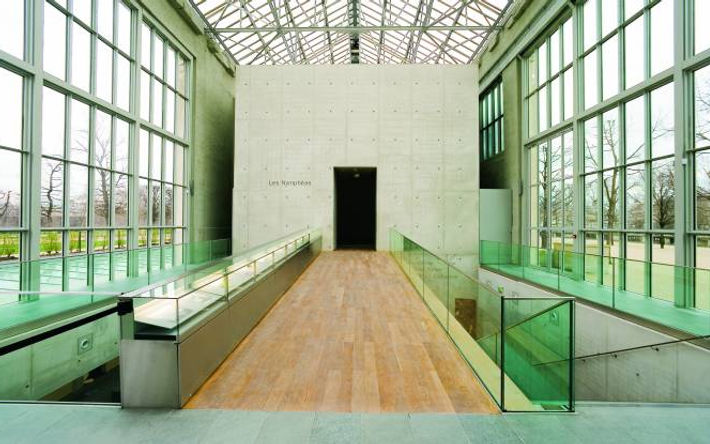Now tell me, why not visiting the Musée d’Orsay, which has one of the most extraordinary impressionist and post-impressionist paintings collection?
A specific reason would be that the Orangerie designed (which architect designed the rooms) two oval rooms with elliptical walls to hang the painting which range from 2 to 17 meters long, creating a surprising effect, just like the artist intended. Conceiving a place of peace, it is a total unplugging from the noise of the capital to the interior of the building. The visitor is in an undefined space-time enclosure, surrounded by the landscape of the waterlily-filled lake living a very strong reality withdrawal and opening a door to meditation and reflection amidst an almost mystical silence.



What have aquatic plants, an old orange plants nursery and Monet in common?


One of the most outstanding museums in Paris can be found near the Seine, the Orangerie, famous for its impressionist works of art, but even more for the fact that myriads of water lilies that will abstract you from reality and soak the deepest part of your spirit reside in some of its halls.
Why?
The building designed by the architects Firm Bourgeouis and Ludovico Visconti and opened in 1853 was originally conceived to house orange trees during the winter. It had many uses later like, as a military equipment storage or as a backdrop for various events up until 1921, when it was assigned to the “Service des Musées de France” (“direction des Musées de France” at the time) becoming an impressionist and post-impressionist paintings museum. But the particular reason I recommend l’Orangerie is because of its enormous paintings called “Nympheas” by Claude Monet.


Andrea, it is known that Paris is a city full of art and monuments, but I would like you to recommend me an interesting site to visit.
It is true, Paris really bursts with places to visit and see, however, I instinctively recommend the L’Orangerie Museum (Musée de L’Orangerie).
Monet presents an impressionist work (in fact he is one of the impressionist painting founders), but his waterlilies are also abstract and conceptual. The paintings perfectly marry up with these curved walls that were made with the objective of “diving” into the work of the artist. I think that everything combined; the paintings and the walls could be called an installation of contemporary art. When the genius of painting comes from heightened art, it goes beyond time and definitions.





